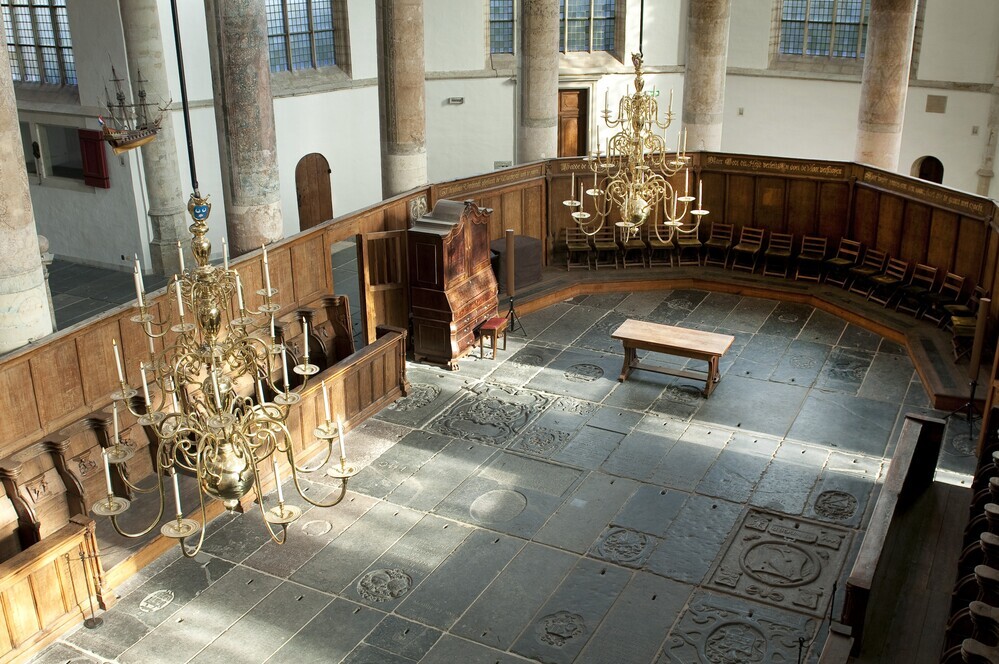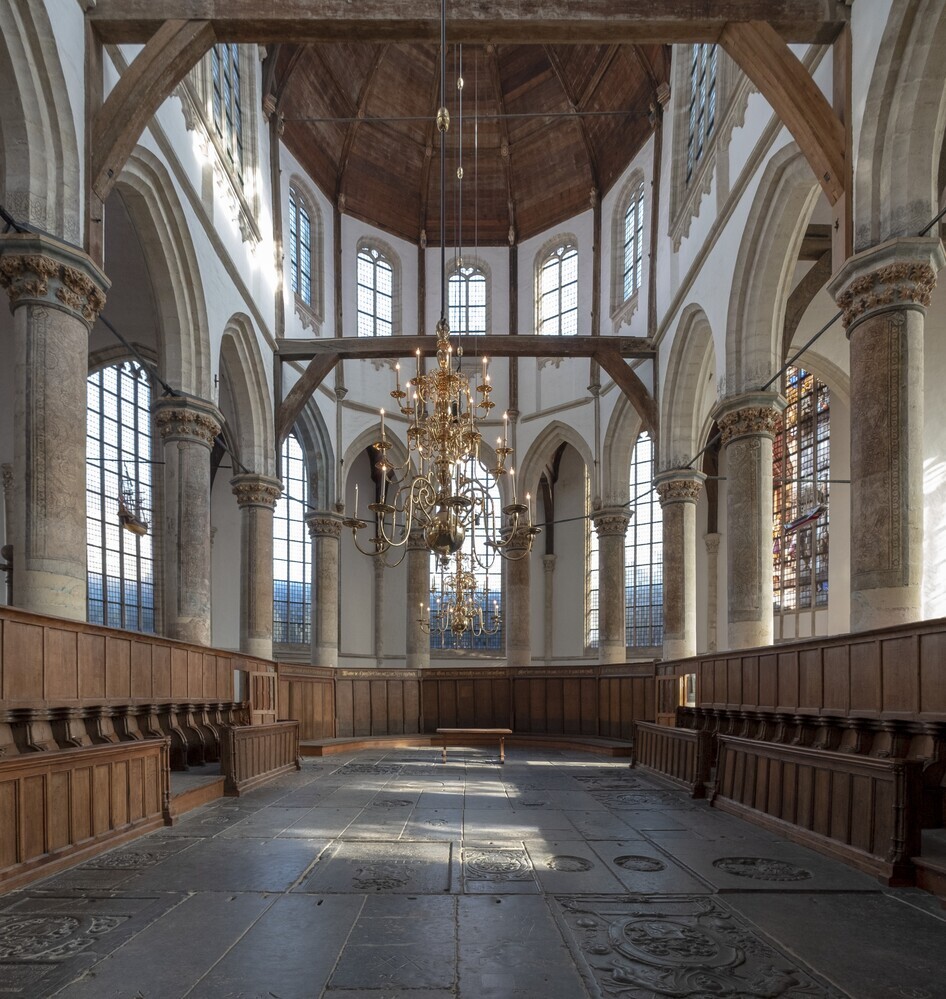Hoogkoor
The hoogkoor (high choir) formed the Oude Kerk's most sacred space. Here, the high altar stood and the most important masses and rituals took place. Objects such as the [ablution chalice](https://deanderekaart.amsterdam/en/map/OUN01-ablution-chalice) played an essential role in Catholic liturgy. After the Alteration, however, many objects that expressed the richness of Catholic worship were no longer used. This small glass chalice is one of the few objects from the Catholic period of the Oude Kerk that survived the "Beeldenstorm" - a period of iconoclast outbreaks throughout Northern Europe - and was preserved after the Alteration.
---
## The consequences of the Beeldenstorm
What did not survive the Beeldenstorm was the altarpiece of the high altar - presumably one of the highlights of 16th-century painting in Amsterdam. It was a triptych, painted by Jan van Scorel, depicting the Cavalry Mount, the Carrying of the Cross and the Resurrection. In 1537, this altarpiece was expanded into a seven-panel work by Maarten van Heemskerck; unfortunately, nothing is known about the additional depictions.
In Catholic times, the Oude Kerk housed numerous statues of saints and altars dedicated to specific saints. Like the High Altar, these did not survive the Iconoclasm and the subsequent Alteration. For Protestants, richly decorated altars and images of saints were considered idolatry; they strove for a sober church interior that would not distract attention from worship. However, the church was not completely stripped of decoration. The focus shifted from religious to political representation - for example, the Peace of Münster window was installed in the church during this period.
After the Alteration, the Oude Kerk's function also changed. Its social role grew. Masses no longer took place in the now empty side chapels, but meeting places were set up. Between services, there were even concerts open for public. At the same time, the religious function was concentrated in the High Choir, where from now on all liturgical acts took place.
## Special ironwork in the High Choir
Between the high choir and the nave is a [choir screen](https://oa.sharebox.nl/collect/4704-11?lang=en) made of oak and wrought iron. This imposing fence, which dates from after the Alteration, is an important example of the lobe style - an ornamental style that became popular in the Netherlands around 1600. On the east side of the high choir, the space is closed off by a [choir screen](https://oa.sharebox.nl/collect/4704-7?lang=en), connected to the [north](https://oa.sharebox.nl/collect/4704-15?lang=en) and [south choir stalls](https://oa.sharebox.nl/collect/4704-14?lang=en). The motifs on the misericordes of these pews recur in several places in the church.
Explore the elements of the work
Read more
Read more
Read more
Read more
Read more
Read more
Read more
Read more
Read more
Read more
Read more
Part of
Read more
Related
Read more
Read more
Read more
Read more
Read more
Read more
Read more
Read more
Read more
Read more
Read more
Read more
Read more
Read more
Read more
Read more
Read more
Identifiers for references
| Oude kerk Adlib Collect priref | 2354 |

